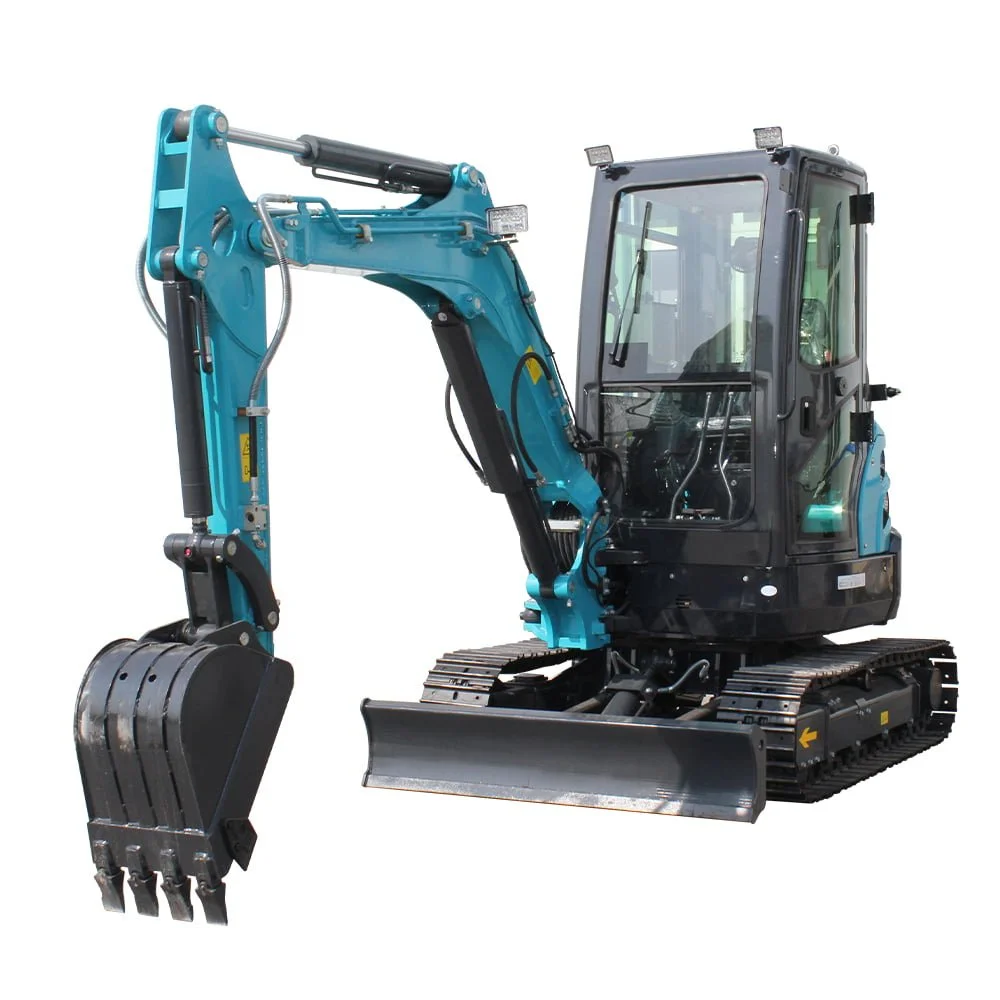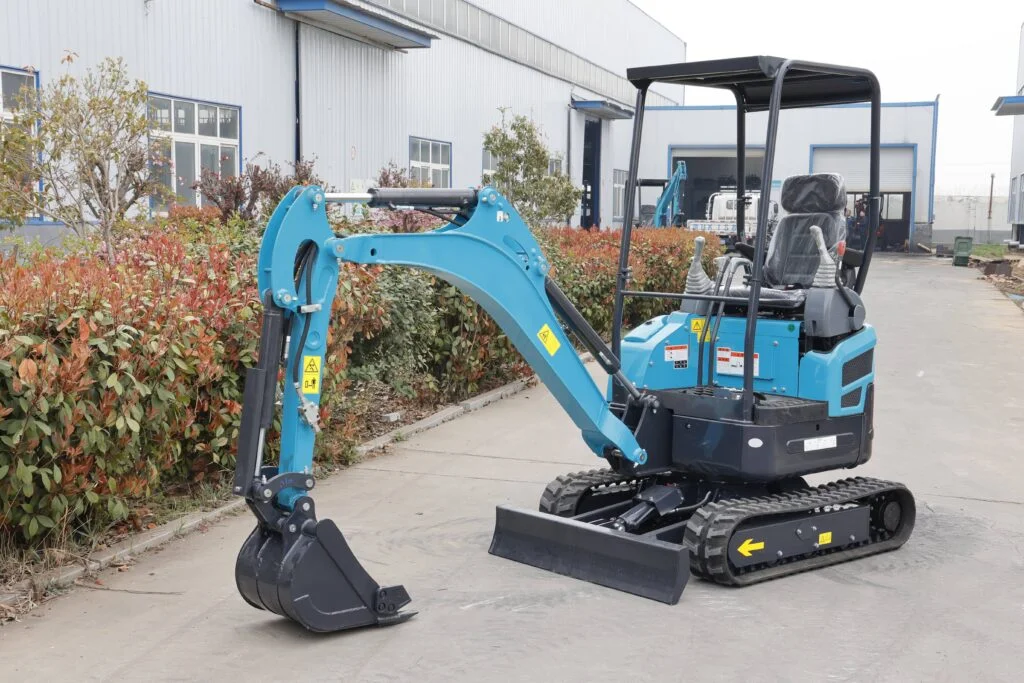E-mail: info@qilumachinery. com Whatsapp: 8618266768780
Como escolher a pequena escavadeira certa para suas necessidades
Bem-vindo ao meu blog!
Antes de mergulharmos no conteúdo, adoraria que você se juntasse a mim nas minhas plataformas de mídia social, onde compartilho mais insights, interajo com a comunidade e posto atualizações. Veja como você pode se conectar comigo:
Facebook: https://www.facebook.com/profile.php?id=100072217509763
LinkedIn: https://www.linkedin.com/company/74949059/admin/dashboard/
YouTube:https://www.youtube.com/@tractormanufacturer-lc5qz
TikTok: https://www.tiktok.com/@tractormanufacturer
Agora, vamos começar nossa jornada juntos. Espero que você ache o conteúdo aqui perspicaz, envolvente e valioso.
Introdução
When it comes to construction, landscaping, and various other earth-moving tasks, having the right equipment is essential. One of the most versatile machines in this field is the little excavator. These compact machines are perfect for tight spaces and small projects, making them a popular choice for contractors and DIY enthusiasts alike. In this guide, we’ll explore the factors to consider when choosing a little excavator, the benefits of using one, and how to ensure it meets your specific needs.
By the end of this article, you will have a comprehensive understanding of little excavators, their features, and how to select the best one for your requirements.
What is a Little Excavator?

Definition of Little Excavator
A little excavator, also known as a mini or compact excavator, is a small-sized machine used for digging, lifting, and moving materials. These machines are typically designed to be lightweight, making them ideal for smaller jobs and projects that require precision. Their compact size allows them to maneuver in confined spaces where larger excavators cannot operate effectively.
Features of Little Excavators
Little excavators come with various features that make them efficient and user-friendly. Some common features include:
- Variable boom swing: This allows the excavator to dig in tight spots without having to reposition the entire machine.
- Adjustable tracks: Many little excavators have adjustable tracks, which can be widened or narrowed based on the job requirements.
- Hydraulic attachments: Little excavators can be equipped with various attachments, such as buckets, augers, and grapples, to enhance their functionality.
- User-friendly controls: These machines often feature intuitive controls, making them easy to operate even for beginners.
Benefits of Using a Little Excavator
Manobrabilidade
One of the primary advantages of little excavators is their maneuverability. Their compact size allows them to work in confined spaces, such as residential backyards or narrow construction sites. This makes them ideal for landscaping, digging trenches, and other projects where space is limited.
Custo-benefício
Little excavators are generally more affordable than their larger counterparts, making them a cost-effective solution for small projects. Additionally, their fuel efficiency helps reduce operational costs over time, allowing you to maximize your budget.
Versatilidade
These machines are incredibly versatile and can handle a wide range of tasks. Whether you need to dig, lift, or transport materials, a little excavator can adapt to various applications, from landscaping to plumbing and electrical work.
Facilidade de transporte
Little excavators are lightweight and often fit onto standard trailers, making them easy to transport from one job site to another. This mobility allows contractors to quickly switch between projects without the hassle of large equipment transportation.
Segurança aprimorada
The design of little excavators often prioritizes safety features, such as roll-over protection systems (ROPS) and seat belts. These features help ensure operator safety while working in challenging conditions.
Factors to Consider When Choosing a Little Excavator
Requisitos do Projeto
The first step in selecting the right little excavator is to assess your project requirements. Consider the following factors:
- Type of work: What type of tasks will you be performing? Are you digging, lifting, or moving materials?
- Weight capacity: Determine the weight of the materials you will be handling. Ensure the excavator can safely lift and transport these materials.
- Depth of excavation: How deep do you need to dig? Make sure the excavator has the required digging depth for your project.
Tamanho e peso
Little excavators come in various sizes and weights. When selecting a machine, consider the following:
- Peso operacional: Choose a weight that matches your project’s terrain. Heavier machines may not perform well on soft ground.
- Dimensões: Consider the overall size of the excavator, including width and height, to ensure it can fit into your work area.
Energia Hidráulica
Hydraulic power is crucial for the performance of a little excavator. Look for machines with:
- High hydraulic flow rates: A higher flow rate allows for faster operation and the ability to use more powerful attachments.
- Hydraulic system design: Consider whether the hydraulic system is designed for durability and ease of maintenance.
Opções de anexo
When choosing a little excavator, consider the types of attachments you may need. Popular attachments include:
- Baldes: For digging and moving materials.
- Brocas: Para fazer furos.
- Agarra: For lifting and handling bulky materials.
- Breakers: For breaking concrete or asphalt.
Ensure the excavator you choose can accommodate the attachments you require.
Reputação da marca
Research the reputation of the brands you are considering. Look for manufacturers known for producing high-quality, reliable machines. Consider reading customer reviews and seeking recommendations from other contractors.
Table: Comparison of Popular Little Excavator Models
| Brand & Model | Peso operacional | Cavando Profundidade | Potência |
|---|---|---|---|
| Qilu QLN20 pro | 2,000 lbs | 7.8 ft | 20 hp |
| Bobcat E35 | 3,000 lbs | 11.5 ft | 25 hp |
| Caterpillar 302.7 CR | 3.500 libras | 12.5 ft | 30 hp |
| Komatsu PC30MR-5 | 4,200 lbs | 13.1 ft | 27 hp |
| Kubota KX040-4 | 4,800 lbs | 12.8 ft | 40 hp |
Common Uses for Little Excavators
Paisagismo
Little excavators are frequently used in landscaping projects to dig holes for planting trees, shrubs, and flower beds. Their ability to maneuver in tight spaces makes them perfect for residential landscaping.
Abertura de valas
For plumbing and electrical work, little excavators are ideal for digging trenches. Their digging capabilities allow for precise trenching without damaging surrounding areas.
Classificação e nivelamento
Little excavators can be equipped with grading attachments to level soil, gravel, or other materials. This is particularly useful for preparing sites for construction or landscaping.
Preparação do local
Before starting any construction project, little excavators can prepare the site by clearing debris, removing topsoil, and excavating areas for foundations or footings.
Trabalho de utilidade pública
Utility companies often use little excavators for installing and repairing underground lines, such as water, gas, and electricity. Their compact size allows them to work in urban environments with limited access.
Maintenance Tips for Little Excavators

Inspeções Regulares
Conduct regular inspections of your little excavator to ensure it is in good working condition. Check for any signs of wear and tear, including hydraulic leaks, damaged tracks, and worn-out attachments.
Keep It Clean
Cleaning your little excavator after use helps prevent the buildup of dirt and debris, which can lead to corrosion and mechanical issues. Pay special attention to the hydraulic components and undercarriage.
Change Fluids Regularly
Regularly change the oil and hydraulic fluids according to the manufacturer’s recommendations. This helps maintain optimal performance and extends the life of your little excavator.
Armazene adequadamente
When not in use, store your little excavator in a dry, sheltered area to protect it from the elements. This can prevent rust and damage to the machine.
Siga as diretrizes do fabricante
Always follow the manufacturer’s maintenance guidelines and recommendations. Proper maintenance is key to ensuring the longevity and efficiency of your little excavator.
Conclusão
Choosing the right little excavator for your needs involves considering various factors, including project requirements, size, and brand reputation. These compact machines offer numerous benefits, including maneuverability, cost-effectiveness, and versatility, making them an excellent choice for a wide range of applications.
By understanding the features and options available in little excavators, you can make informed decisions that will enhance your productivity and efficiency on the job site. Whether you are a contractor or a DIY enthusiast, investing in the right little excavator will help you tackle your projects with ease.
Perguntas frequentes
What is the main advantage of using a little excavator?
The main advantage of using a little excavator is its maneuverability, making it ideal for working in tight spaces where larger machines cannot operate.
How deep can a little excavator dig?
The digging depth of a little excavator can vary by model, but many can dig between 10 to 18 feet, depending on the specific machine and its configuration.
Can I use a little excavator for residential landscaping?
Yes, little excavators are frequently used for residential landscaping tasks, such as digging holes for plants and leveling soil.
How much does a little excavator typically weigh?
Little excavators typically weigh between 2,000 to 6,000 pounds, depending on the model and configuration.
What types of attachments can be used with little excavators?
Common attachments for little excavators include buckets, augers, grapples, and breakers, which enhance their versatility for various tasks.
Sobre nós
Shandong Qilu Industrial Co., Ltd. é um fabricante e exportador profissional que integra o desenvolvimento e produção de escavadeiras, carregadeiras e tratores. Nós fornecemos o melhor serviço, absolutamente.
Postagens recentes
Vídeo de demonstração
-1.png)
Fale Conosco Hoje!
Alguma dúvida, orçamento ou consulta? Clique no botão para enviar mensagem.
A Qilu Industrial estará sempre aqui para ajudar.
